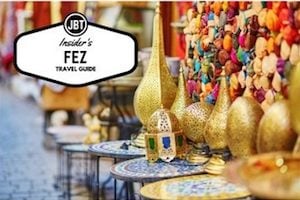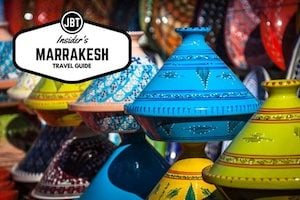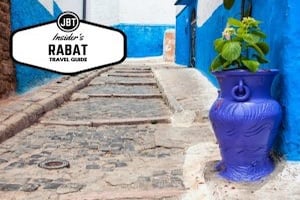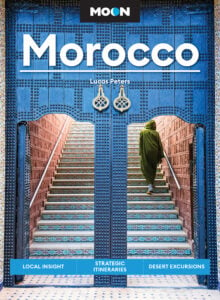The prickly pear is a fruit Moroccans love to eat and love to hate! It’s appropriately named for its spiky outer shell, and the fact that it is the fruit of the cacti plant. If you look out the window during your Moroccan road trip, you will notice an impressive number of these prickly pear cacti pretty much everywhere!
The prickly pear made its way to Morocco all the way from Mexico in the 1770s, though its name in Moroccan Arabic, l’hindia (the Indian Fig) suggests otherwise. Today, it is flourishing across North Africa and is deeply rooted in the everyday lives of its residents. Sadly, in certain regions of Morocco the plant has recently been devastated by the cochineal beetle burrowing its way in and resulting in some sad and wilting cacti. The knock-on effect of this has been economic loss to farmers and an increase in price to the consumer!
Moroccans Love and Hate Eating the Prickly Pear
The beginning of July marks the beginning of the Prickly Pear season. Street vendors pop up in every corner of the country, in every city, town and even alongside the freeways and national roads! They peel the prickly pear and sell it for around 1 dirham per piece. Most people eat their spiky treasure on the spot while others take it home and put it in the fridge for later. You can find jams and spreads made out of its pulp, but these won’t have the seeds that contain half of the fruit’s nutrients.
Like all delicious foods, the prickly pear is best eaten in moderation. If you eat more than 2 or 3 (depending on your digestive system) they may leave you constipated for days… or you might have the direct opposite problem. Love and hate, indeed!
The Incredible Health Benefits of the Prickly Pear
The prickly pear is largely used to create pharmaceutical products and remedies. The oil derived from its seeds is said to help with high blood pressure, type 2 diabetes and cancer. It is antiviral, antibacterial, antioxidant, eases ulcers and reduces cholesterol and obesity.
Consuming a ton of prickly pears will not cure you completely (remember our warning above!), but its oil might improve your health and be a changing and boosting agent in your healing process. One ton of prickly pears is required to produce a mere one liter of this precious oil, putting its price into perspective! A liter of pure oil could set you back somewhere around the 10,000 dirhams (about $900) mark.
The superfruit benefits, both cosmetic and medical, are mainly attributed to its high amount of vitamins E, A and C, Omega 6 and magnesium.
The Prickly Pear in Beauty Care
Used in a beauty care or routine, this oil should be held in a sacred place and is considered to be a luxurious organic skin care treatment – especially when considering that price! The seed oil of the prickly pear has demonstrated itself to be very efficient in preventing the age old fight against the effects of aging skin. It is also used for healing, repairing and nourishing the skin, the hair, and the nails. It is rich in Vitamin E, A, C and Omega 6, very prized components in organic cosmetics. Berber women have been using this oil for centuries in the most arid areas of Morocco, and many of them contribute their flawless skins after all their exposure to sun, heat and hard work, to this miracle oil.
The Prickly Pear Feeds Livestock
The inside flesh of the cactus leaves can be used to feed animals when other plants and nutrients are hard to come by, as it is cheap and usually easy to find. It is not very rich in protein, but is highly hydrating, which is very useful when you know that dehydration is a major reason of livestock deaths during particularly arid summers. Watching a donkey munching on a prickly pear plant out of choice means, in the life of a donkey at least, the benefit of the flavor must outweigh the discomfort of the thorn!
The Prickly Pear Industry Empowers Women
As the process of extracting the seeds from the fruits is demanding and tedious, many women in different regions of Morocco are making it their business. Mostly from poor rural areas, these women have no income and have found in the prickly pear a financially beneficial friend. These women are paid around $4 per kilogram of seeds they collect. This may not seem like it is much, but for many women living in rural Morocco, this is money they desperately need to gain some sort of financial independence or make ends meet for their families. So the next time someone tells you money doesn’t grow on trees, you can tell them: “Maybe not… but it kind of grows on cacti.” At least it does for these hardworking women of Morocco.
About the Author
 Laïla Ouazzani is a Meknèsiya (a native of Meknès, Morocco) who loves discovering what her country has to offer. She is a born foodie. Lucky for her, there are plenty of delicious dishes to be discovered around Morocco. Besides food, she enjoys everything else that connects her to the roots of her country and shares her findings and experiences with everyone she can! Laïla is currently based in Casablanca.
Laïla Ouazzani is a Meknèsiya (a native of Meknès, Morocco) who loves discovering what her country has to offer. She is a born foodie. Lucky for her, there are plenty of delicious dishes to be discovered around Morocco. Besides food, she enjoys everything else that connects her to the roots of her country and shares her findings and experiences with everyone she can! Laïla is currently based in Casablanca.









